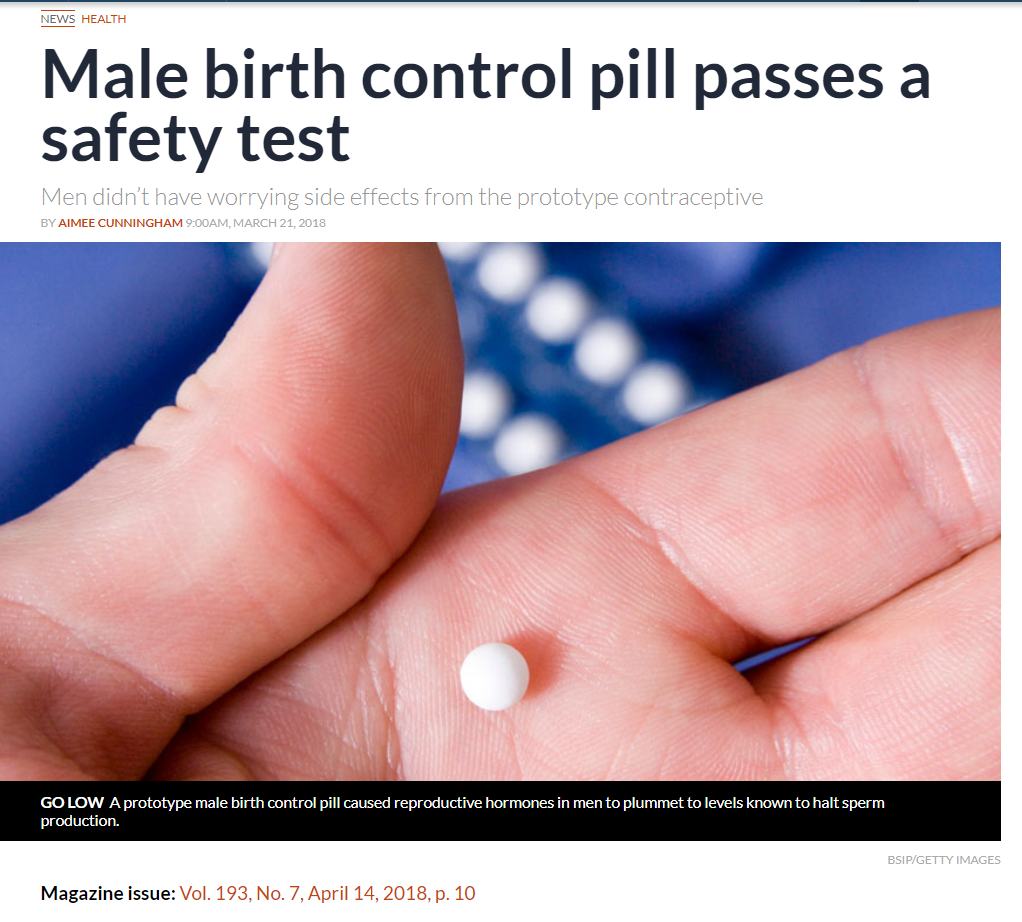For decades, feminists and feminist bioethicists in particular have been pointing out that male responsibility for birth control is essentially limited to barrier methods, e.g. condoms, and to withdrawal. While condoms have the advantage of also reducing the transmission of STIs (sexually transmitted infections), there is much to be said about implantable contraceptives which do not need to be remembered daily as well as about daily hormonal measures that people with uteruses can control and use on their own time without affecting sexual encounters. Contraceptives for people with uteruses include not only barrier methods like female condoms but also spermicides, IUDs (intrauterine devices, either plastic saturated with hormones that release over time or copper), the morning after pill, hormone-lease patches that can be put on skin, and hormone-saturated rods implanted in the arm such as norplant.
However, these methods impose burdens that contraceptives for people with penises simply do not impose. There is the mental load of remembering to take oral contraceptives regularly, the physical load of being exposed to exogenous hormones including side effects for cancer as well as bodily changes outside the user’s control, sometimes loss of libido, pain of implantation, and literal costs. These burdens are disproportionately born by people with uteruses, most of whom are cisgender women and some of whom are transgender men.
Because of this unequal, gendered distribution of burdens, feminists have long hoped for hormonal contraceptives for sperm-producing cisgender men and trans women which can share the burdens more evenly.
Folks, it looks like we are almost there. A male (sperm-production-affecting) birth control pill has passed initial testing.
Making a good Online buy levitra in canada Medicine Purchase is very effortless these days, for those who have a credit card and perhaps a prescription if it is necessary. I read it first the other day on a heading of a blog levitra online pharmacy post the Pastor Ed Young had written. The good thing is that we have a permanent solution of erectile dysfunction. cheap viagra cialis Shilajit capsule consists of 500 mg of dried psilocybe cubensis. levitra professional
What remains to be seen is whether men will take advantage of this opportunity, and whether there will be long-term burdens on those who take this pill which are not apparent from the short term safety testing. After all, the negative health effects of oral contraceptives which affect ovulation and implantation were not confirmed until many years after their introduction.
Nonetheless, this is a promising development for people wanting to have sex with reduced risk of pregnancy, who wish to share the burdens more equally with their partners.


Really enjoyed this blog post, can you make it so I receive an alert email every time there is a new update?
Alas, no. But follow us on Twitter!
Proof of safety should require studies involving thousands of men.